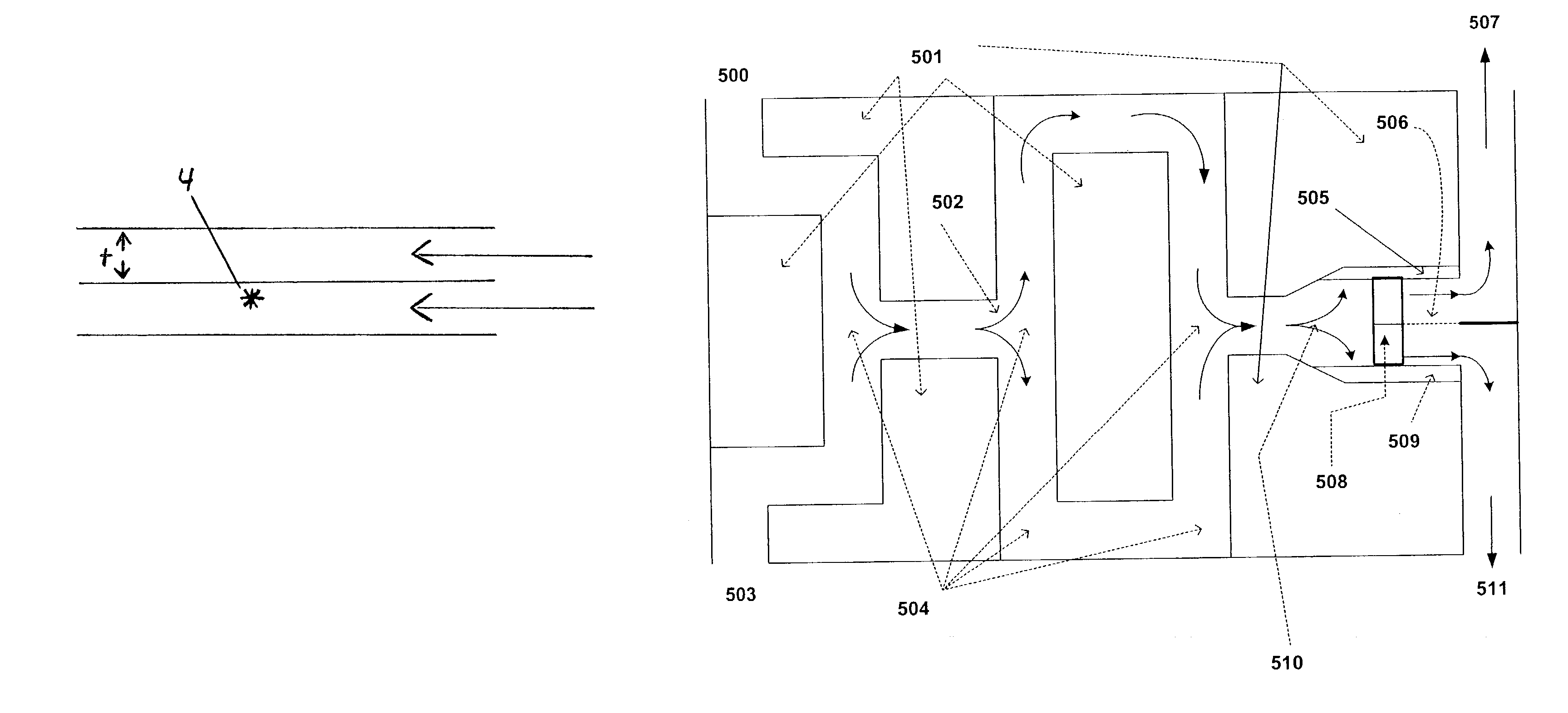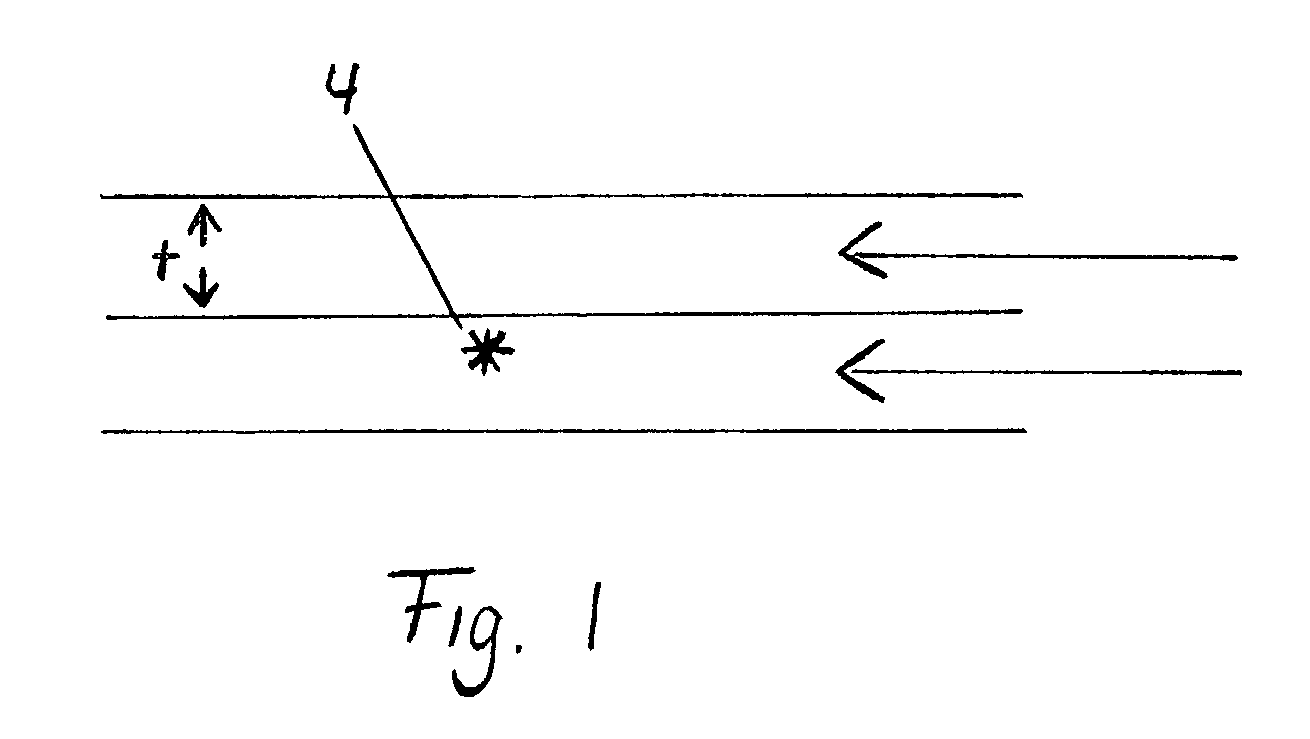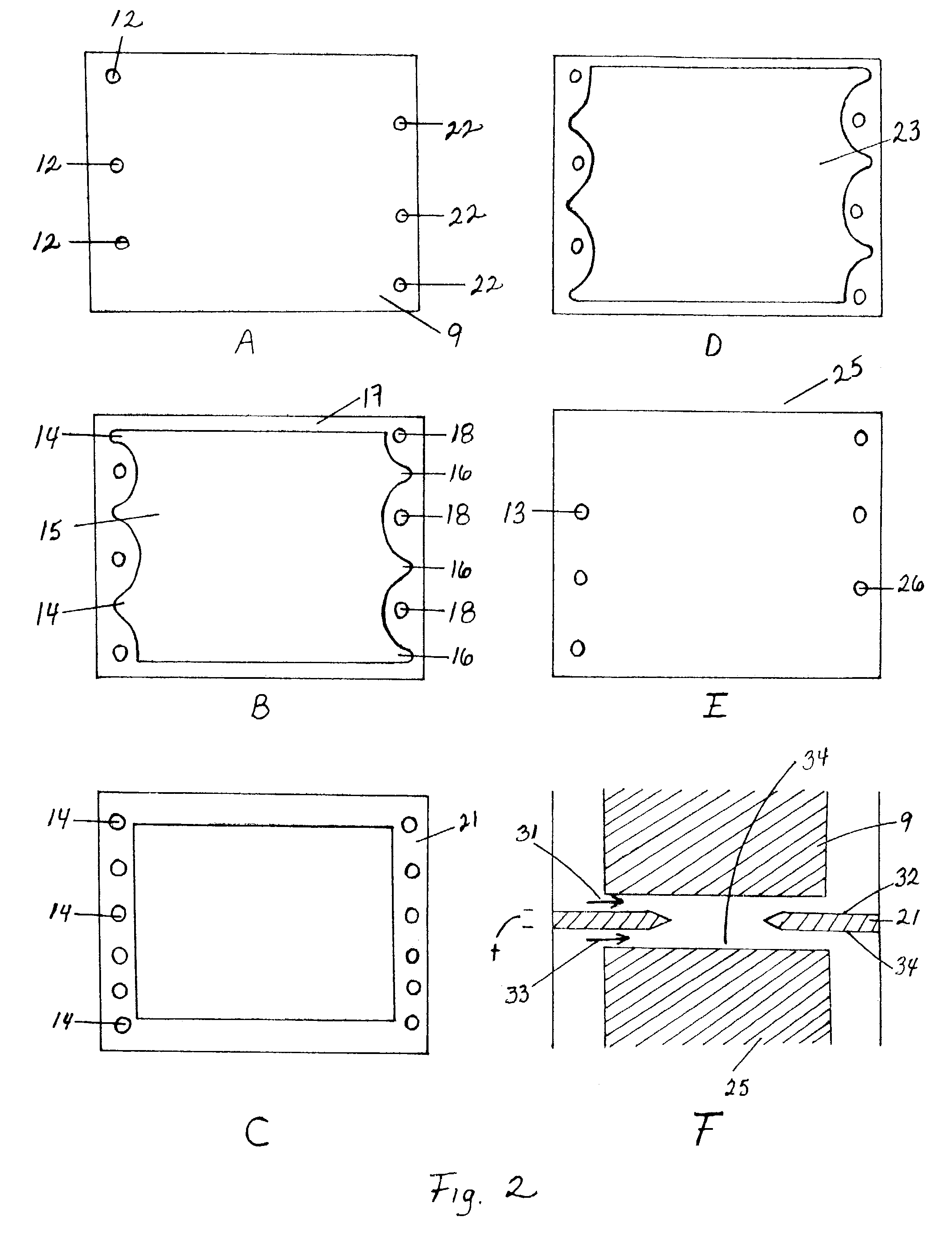Multiphasic microchannel reactions
a multi-phase, microchannel technology, applied in chemical/physical processes, carboxylic preparation by oxidation, biological material analysis, etc., can solve the problems of slow kinetics, potential difficulties in multi-phase processes, and difficulty in obtaining quick phase separation, so as to improve reactivity and/or fluid separation
- Summary
- Abstract
- Description
- Claims
- Application Information
AI Technical Summary
Benefits of technology
Problems solved by technology
Method used
Image
Examples
example 1
[0083]Conventionally, cyclohexane oxidation is cautiously oxidized with air in large vats in manufacturing cyclohexanone-cyclohexanol ketone-alcohol blend (K-A), the intermediate in manufacturing commodity chemicals such as adipic acid food acidulant and nylon 6,6 intermediate. Only about 4% conversion of the hexane to K-A is allowed to occur per pass to avoid igniting the hot hexane / air mixture caused by present of peroxide and other intermediates. The per pass conversion is also limited for economic reasons, as over oxidation produces wasteful by-products of dicarboxylic acids of shorter chain length (C4, C5), which can only be purged from the process and product by wasting significant quantities of the product, adipic acid. In addition it is very difficult to contact the catalyst, for example cobalt or boric acid, with the hexane due to low solubility in this solvent, requiring intense mixing operations. Also, the highly exothermic reaction could readily cause the system to overh...
example 2
[0091]Most aldehydes are difficult compounds to make due to the ease at which the reaction proceeds too far. For example, in making an aldehyde, RCHO, by oxidizing an alcohol, ROH, major loss in yields occur due to the overoxidation to the carboxylic acid, RCOOH, i.e.,
[0092]
ROH + oxidant → RCHO(desired reaction)RCHO + oxidant → RCOOH(unwanted over-reaction)
Suitable oxidants are hot, acidic potassium dichromate, chlorochromate, permanganate, etc. with a PTC that is oxidation resistant such as pyridinium ion, C5NH5+, (py+) and its derrivatives. For example pyridinium chlorochromate (Merck Index, Vol. 12, number 8157, page 8153). Another example is potassium permanganate oxidant with 18-crown-6 as the PTC. For example, n-propanol is oxidized to propylaldehyde, CH3CH2CHO in only 45–49% yield using potassium dichromate acidified with sulfuric acid at boiling conditions (Organic Synthesis Coll. Vol. 2, 541). MTP with either of the above mentioned PTC would be expected to provide substanti...
example 3
[0094]Mono substituted hydroxylamines, RNHOH, are difficult compounds to make due to the ease at which the reaction proceeds too far. For example, in making RNHOH by reducing a nitroalkane liquid, RNO2, by heating with a Pd-based catalyst in hydrogen gas major loss in yields occur due to the over-reduction to the amine, RNH2 i.e.,
[0095]
RNO2 + H2 → RNHOH(desired reaction)RNHOH + H2 → RNH2(unwanted over-reaction)
For example R can be Me-, Et-, nPr-, iPr, nBu-, iBu-, C6H5—, MeC6H5—, xylenes, naphthalenes, 2-ethylhexyl-, etc.
[0096]PTC MTP technology is an excellent solution to this problem for the following reasons: 1) only small amounts of the heated nitroalkane, an explosive blend, be contained in the reactor at any one time. 2) the intimate mixing (Figure) of the two (aqueous base and nitro-alkane liquid), allows the PTC, a quaternary ammonium hydroxide, to bring the reactants togehter in intimate contact and uniformly. Hence reactant concentrations will vary less, allowing higher pro...
PUM
| Property | Measurement | Unit |
|---|---|---|
| length | aaaaa | aaaaa |
| thickness | aaaaa | aaaaa |
| thickness | aaaaa | aaaaa |
Abstract
Description
Claims
Application Information
 Login to View More
Login to View More - R&D
- Intellectual Property
- Life Sciences
- Materials
- Tech Scout
- Unparalleled Data Quality
- Higher Quality Content
- 60% Fewer Hallucinations
Browse by: Latest US Patents, China's latest patents, Technical Efficacy Thesaurus, Application Domain, Technology Topic, Popular Technical Reports.
© 2025 PatSnap. All rights reserved.Legal|Privacy policy|Modern Slavery Act Transparency Statement|Sitemap|About US| Contact US: help@patsnap.com



